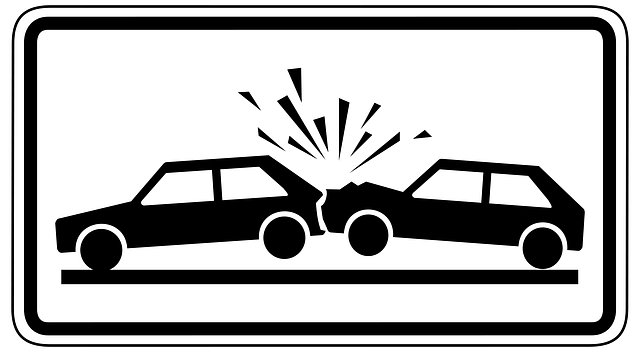Garbage Truck Accident Footage: Unraveling Safety Concerns

A recent garbage truck accident, captured on footage in an urban area, has raised serious safety con…….
In the bustling urban landscape, where efficiency and sustainability are paramount, garbage truck accidents (GTA) have emerged as a critical issue, demanding attention from policymakers, urban planners, and safety advocates alike. This article delves into the multifaceted world of GTA, exploring its causes, impacts, global reach, and the innovative solutions shaping its future. By examining these aspects, we aim to provide valuable insights into how cities can navigate the challenges posed by waste management vehicles and ensure safer, more efficient urban environments.
Definition: A garbage truck accident refers to any incident involving a vehicle designed for collecting and transporting municipal solid waste, including trash, recycling materials, and other refuse. These accidents can range from minor fender benders to severe collisions with significant property damage or personal injuries.
Core Components:
Vehicle Type: Garbage trucks vary in size, from compact rear-loader models suitable for narrow streets to large front-end loader vehicles capable of handling heavy loads. Each truck’s design plays a role in its accident susceptibility and the severity of potential outcomes.
Operation Environment: Urban areas with dense populations and complex traffic patterns are hotspots for GTA. The tight spaces, limited visibility, and frequent interactions with other road users create unique challenges for waste management fleets.
Causes:
Historical Context: GTA has been a concern since the advent of mechanized waste collection in the early 20th century. Early garbage trucks were simpler machines, but as cities grew and waste generation increased, so did the complexity of these vehicles and the associated safety challenges. Over time, efforts to improve safety have evolved from basic vehicle design changes to sophisticated technology integrations.
The impact of GTA is not limited by geographical boundaries, as cities worldwide grapple with similar challenges. However, regional variations in urban planning, waste management practices, and infrastructure contribute to diverse accident trends:
| Region | Key Trends | Challenges |
|---|---|---|
| North America | High adoption of advanced technology like GPS tracking and collision avoidance systems. Stricter driver training regulations. | Strict emission standards require frequent vehicle upgrades, impacting budgets. |
| Europe | Emphasis on electric and low-emission garbage trucks to reduce environmental impact. Comprehensive safety training programs. | Diverse road conditions across member states present challenges for standardization. |
| Asia Pacific | Rapid urbanization drives the need for efficient waste management. Increasing adoption of compact, maneuverable trucks for narrow streets. | Limited resources for frequent vehicle maintenance in fast-growing cities. |
| Middle East & Africa | Focus on implementing safety standards and regulations. Growing investment in smart city infrastructure. | High traffic density and poorly maintained roads exacerbate accident risks. |
The economic aspects of GTA are multifaceted, influencing local governments, waste management companies, and the broader economy:
Market Dynamics: The global garbage truck market is competitive, with leading manufacturers offering various models tailored to specific needs. Local markets may be dominated by regional players or international brands, shaping competition and pricing dynamics.
Investment Patterns: Cities invest in garbage trucks as part of their urban infrastructure development. Factors influencing investment decisions include budget constraints, environmental standards, and the need for specialized vehicles to navigate unique city layouts.
Economic Impact: GTA can have significant economic consequences:
Technology plays a pivotal role in enhancing safety and efficiency in the waste management sector:
GPS Tracking and Telematics: Real-time vehicle tracking allows fleet managers to monitor driver behavior, optimize routes, and quickly respond to accidents or mechanical issues.
Collision Avoidance Systems: These systems use sensors and cameras to detect obstacles, warning drivers and applying brakes if necessary. Advanced technologies like LiDAR and radar are becoming standard in new garbage trucks.
Autonomous Vehicles: While still in the experimental phase, autonomous waste collection vehicles promise increased safety by eliminating human error. They can navigate complex routes autonomously, reducing driver workload.
Smart City Integration: Garbage trucks equipped with IoT (Internet of Things) devices can communicate with other smart city infrastructure, optimizing waste collection schedules and traffic flow.
Governments worldwide have recognized the need for policies and regulations to govern GTA and promote safer practices:
Safety Standards: Many countries mandate safety features like seatbelts, crash-test ratings, and specific engineering standards for garbage trucks. Regular vehicle inspections are also required.
Driver Training: Comprehensive training programs cover defensive driving, vehicle operation, and waste handling procedures. Some jurisdictions require ongoing education to keep drivers updated on safety practices.
Emission Controls: Strict emission standards drive the adoption of cleaner technologies, including electric and hybrid garbage trucks. Non-compliance can result in heavy fines.
Liability Laws: Legal frameworks define liability for accidents, often placing responsibility on waste management companies, drivers, or both. Insurance requirements vary by region to mitigate risks.
Despite significant progress, GTA continues to face challenges and criticisms:
Limited Resources: Maintenance budgets may be insufficient, leading to poorly maintained vehicles and increased accident risk. City officials must balance waste management needs with budget constraints.
Driver Shortage: The demanding nature of the job and concerns over safety contribute to a shortage of qualified drivers. Attracting and retaining skilled drivers is essential for safe operations.
Environmental Impact: While efforts are made to reduce emissions, garbage trucks still produce significant pollution. Transitioning to cleaner technologies requires investment and infrastructure support.
Proposed Solutions:
Copenhagen’s waste management system is a prime example of integrating GTA into a smart city framework. The city uses GPS-enabled garbage trucks to optimize routes, reducing empty miles. Real-time data analysis allows for efficient scheduling, minimizing the time trucks spend on streets. This approach has led to significant reductions in noise and air pollution, enhancing the quality of life for residents.
Lessons Learned:
Tokyo’s experiment with autonomous waste collection trucks has garnered global attention. These self-driving vehicles use advanced sensors and AI to navigate narrow streets and collect waste efficiently. The trial project reported reduced traffic congestion and lower accident rates during the testing period.
Lessons Learned:
The future of GTA is poised for significant growth and innovation, driven by technological advancements and evolving urban needs:
Electric Revolution: The shift towards electric garbage trucks is accelerating due to stringent emission regulations and the falling cost of battery technology. This trend will reduce noise pollution and carbon emissions, contributing to sustainable cities.
Autonomous Dominance: As autonomous vehicle technology matures, fully self-driving waste collection trucks could become common in urban areas. This development would enhance safety and efficiency but raise concerns about job displacement for drivers.
Data Analytics Integration: Advanced data analytics will play a pivotal role in optimizing waste management operations. Predictive modeling can anticipate waste generation patterns, enabling more efficient routing and vehicle deployment.
Sustainable Materials Handling: Future garbage trucks may incorporate bio-based materials and lightweight designs to reduce environmental impact during manufacturing and end-of-life disposal.
Garbage truck accidents are a complex global issue that demands a multifaceted approach. By understanding the historical context, international trends, economic implications, and technological advancements shaping GTA, cities can make informed decisions to enhance safety and efficiency. The case studies presented demonstrate that innovative solutions, from smart city technology to autonomous vehicles, offer promising paths forward.
As urban populations continue to grow, the need for sustainable and safe waste management becomes increasingly critical. By addressing challenges, embracing new technologies, and fostering collaboration among stakeholders, cities can navigate the complexities of GTA and create healthier, more livable environments for their residents.
Q: Are garbage truck accidents a significant safety concern?
A: Yes, GTA is a growing safety concern worldwide. While most incidents are minor, severe collisions can result in serious injuries and property damage. The potential impact on public health and safety makes it crucial to address this issue.
Q: How do technological advancements improve garbage truck safety?
A: Advanced technologies like GPS tracking, collision avoidance systems, and autonomous driving capabilities enhance safety by providing real-time data for better decision-making, reducing human error, and improving vehicle performance.
Q: Can electric garbage trucks replace traditional models entirely?
A: While electric trucks are gaining popularity, they may not completely replace traditional models anytime soon. However, as technology advances and infrastructure supports them, electric vehicles offer a cleaner, more sustainable alternative with lower operational costs.
Q: What role do local governments play in preventing GTA?
A: Local governments implement safety standards, regulate vehicle emissions, and invest in waste management infrastructure. They also collaborate with private sector partners to stay updated on the latest technologies and best practices for safe waste collection.
Q: How can driver training programs contribute to reducing accidents?
A: Comprehensive driver training ensures that operators are skilled, aware of safety protocols, and capable of handling various situations. Regular recertification keeps drivers updated on new regulations and vehicle technology, leading to improved safety outcomes.

A recent garbage truck accident, captured on footage in an urban area, has raised serious safety con…….

A devastating garbage truck accident in Greenhill during early morning hours, caused by driver fatig…….

A garbage truck accident near a school caused multiple injuries to children during afternoon pick-up…….

TL;DR: A recent report reveals root causes of garbage truck accidents, including driver fatigue from…….

In urban areas, a growing concern is the rising number of garbage truck accidents due to factors lik…….

In cases of garbage truck accidents, seeking justice requires a specialized legal approach. Lawyers…….

Insuring garbage trucks requires specialized policies due to their unique risks, including urban nav…….

Garbage truck accidents can cause severe physical injuries, long-term disabilities, and substantial…….

Studying garbage truck accident statistics reveals alarming trends driven by driver error, vehicle i…….

A recent garbage truck accident, caused by driver fatigue, led to widespread disruption and highligh…….